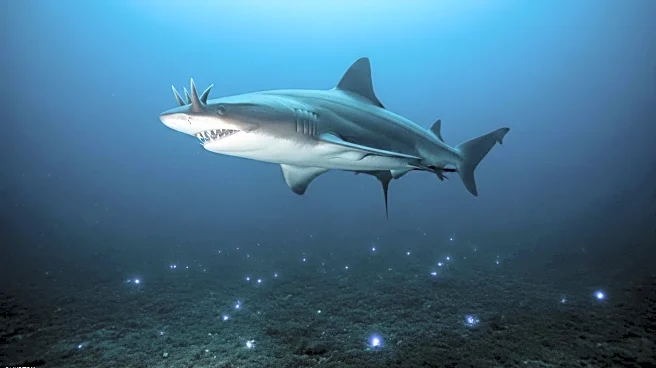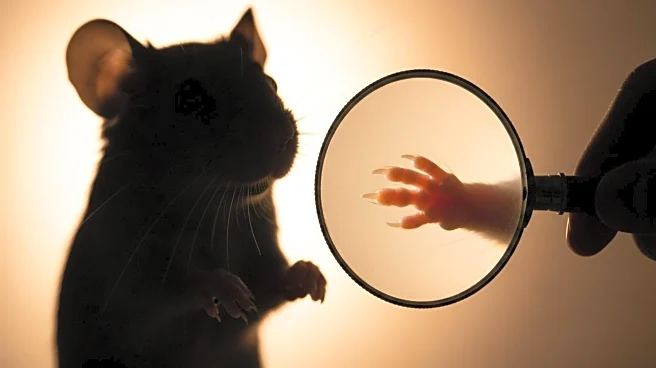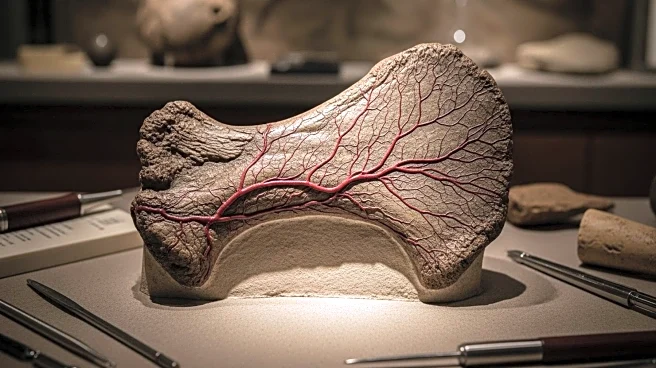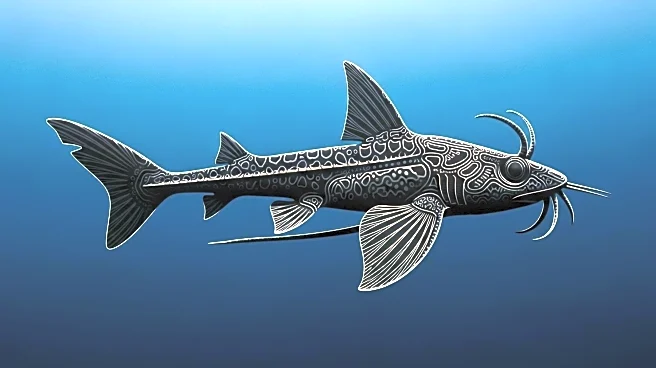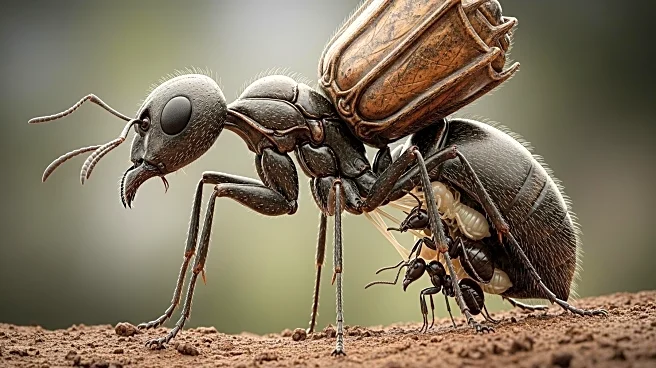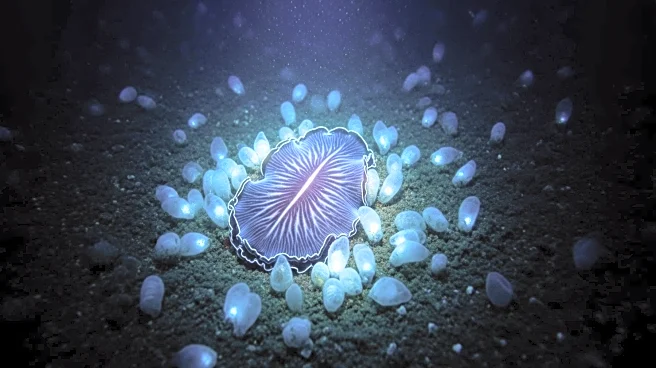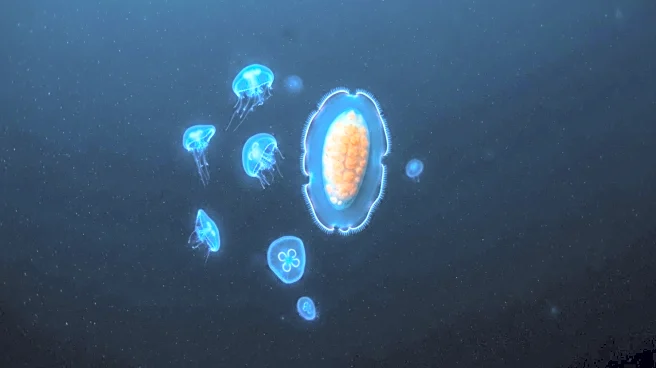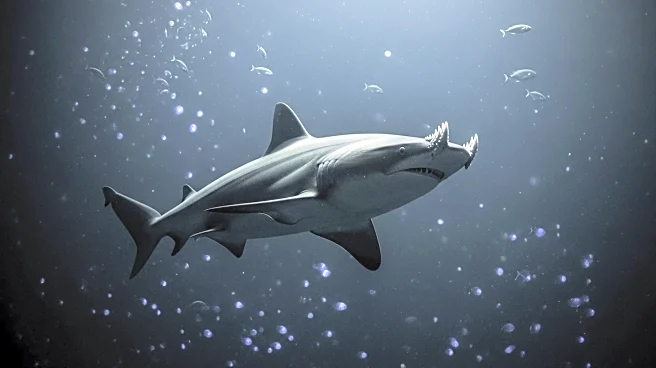What is the story about?
What's Happening?
Researchers have discovered that male ghost sharks, deep-sea fish related to sharks and rays, possess a unique evolutionary feature: a rod on their foreheads with retractable teeth used for mating. This appendage, known as a tenaculum, is exclusive to males and aids in grasping females during mating. The study, conducted by scientists from the University of Florida, University of Washington, and University of Chicago, involved examining fossils and living specimens. Genetic testing confirmed that the tenaculum teeth are true teeth, similar to those found in the mouth, showcasing an evolutionary adaptation for reproductive purposes.
Why It's Important?
This discovery highlights the flexibility and creativity of evolutionary processes, demonstrating how organisms can repurpose existing structures for new functions. The presence of teeth outside the mouth in ghost sharks provides insights into the dynamics of tooth development and evolutionary biology. Understanding such adaptations can inform broader studies on evolution and the development of species-specific traits. The research contributes to the scientific knowledge of marine biology and evolutionary mechanisms, offering potential applications in genetics and developmental biology.
Beyond the Headlines
The study of ghost sharks' unique mating adaptation raises questions about the potential for similar evolutionary developments in other species. It challenges traditional views on tooth development and placement, suggesting possibilities for further research into evolutionary biology. The findings may inspire investigations into other unusual adaptations in marine life, contributing to a deeper understanding of biodiversity and evolutionary strategies.
AI Generated Content
Do you find this article useful?
